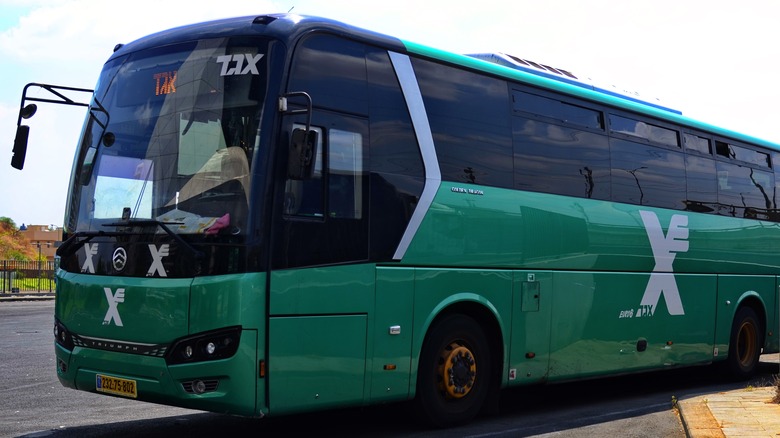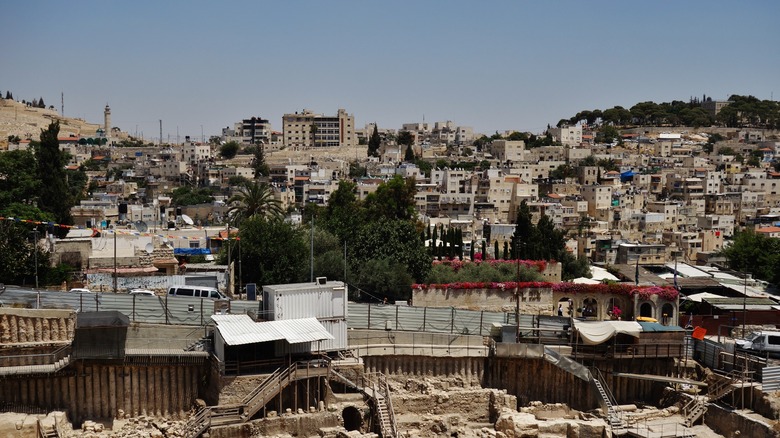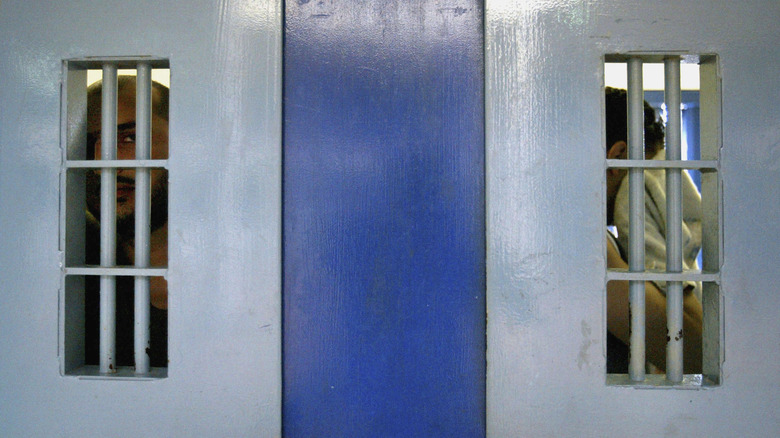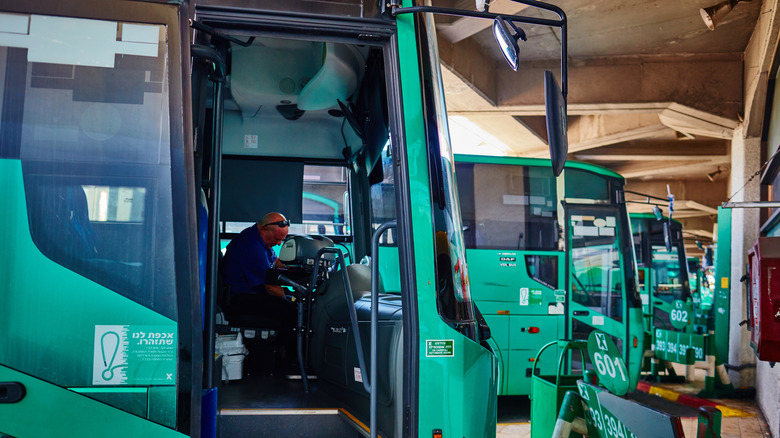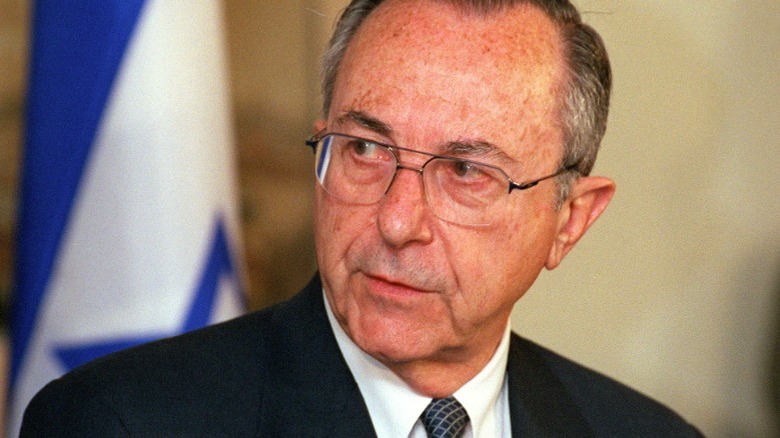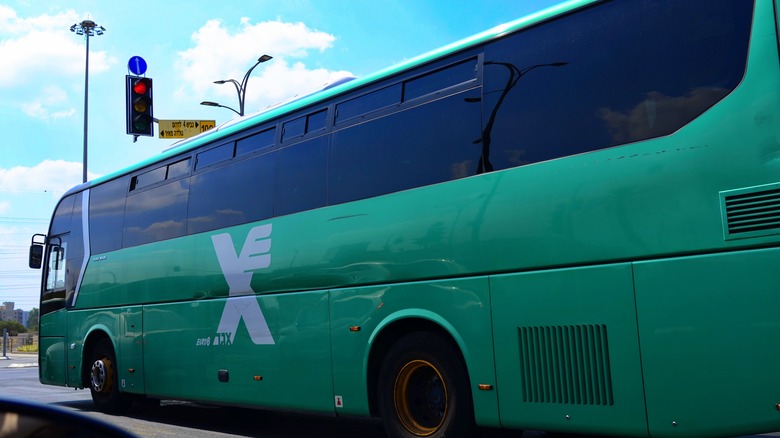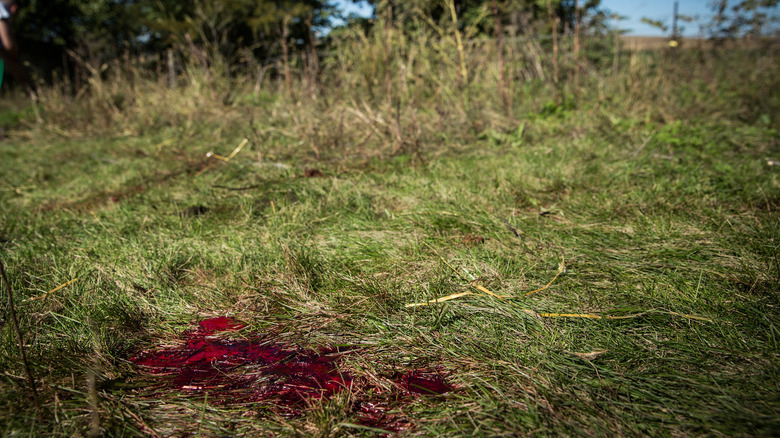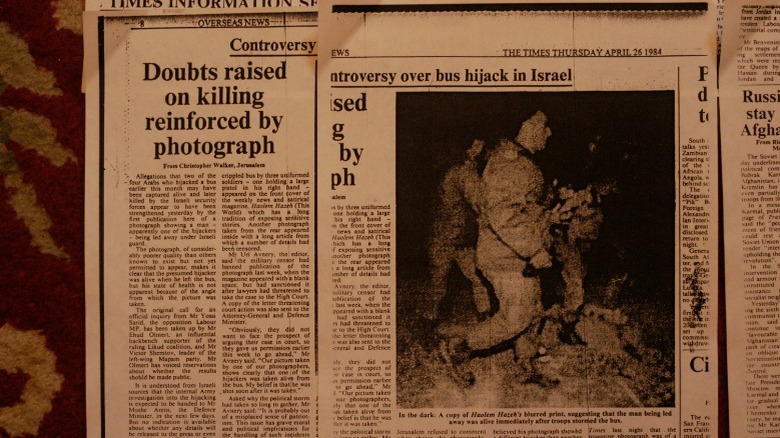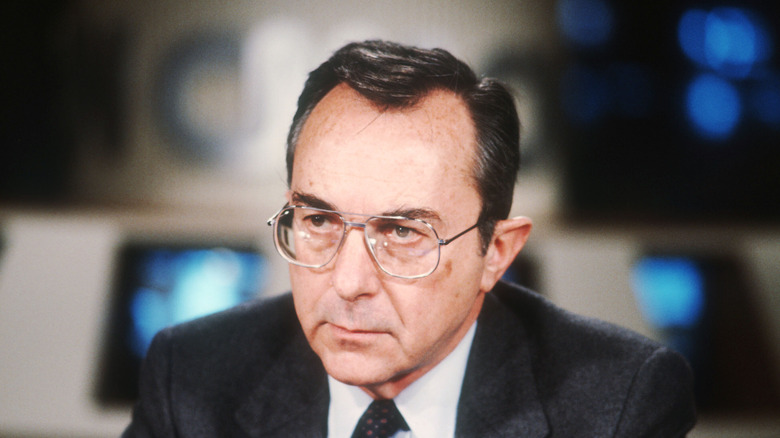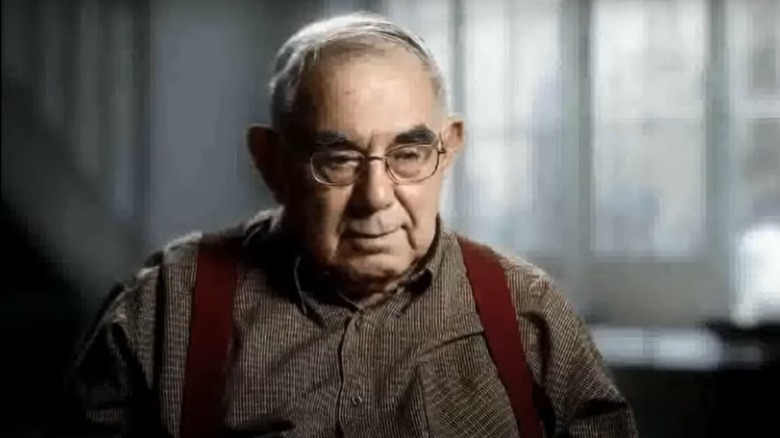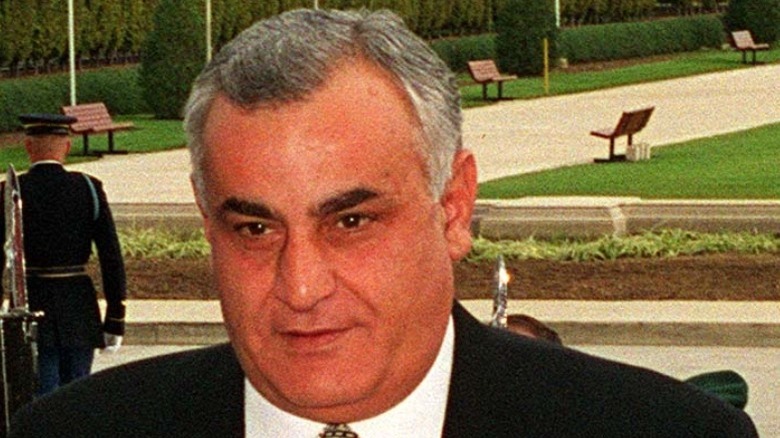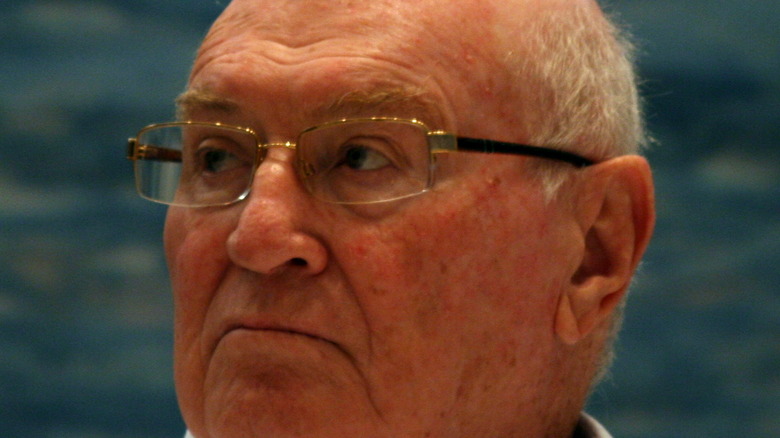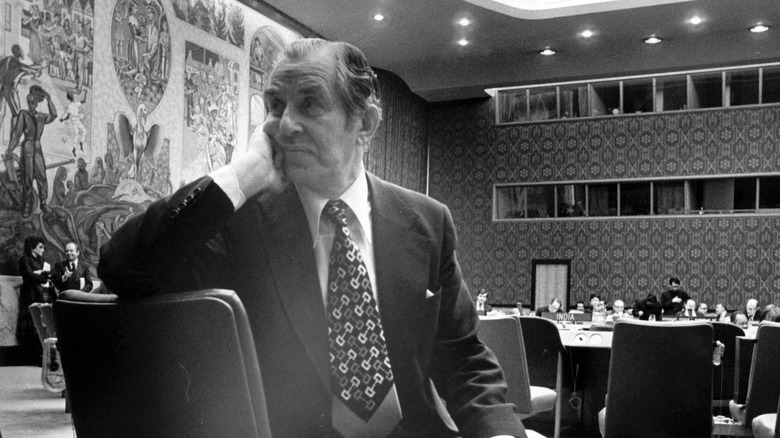The Harrowing Bus 300 Affair Explained
In 1984, a bus of 35 passengers traveling in Israel was hijacked by four young Palestinian men and boys. The Israeli public was subsequently told that all of the Palestinians responsible for the hijacking had been killed during the raid on the bus, but there was in fact much more to the story than was immediately reported.
It would take years before the conspiracy that covered up the murders of two Palestinian boys was finally revealed. In the meantime, perjured testimonies were given, blame was reflected onto others, and governments were blackmailed. But the revelations ultimately did little to scratch the surface of the dark underbelly of the Israel Security Agency, commonly known as Shin Bet.
Extrajudicial killings are nothing new in the history of Israel. But the Bus 300 affair is notable in terms of how far the Shin Bet was willing to go to protect its own. This is the harrowing Bus 300 affair explained.
Israel and Palestine in the 1980s
By the 1980s, the nation of Israel had expanded its occupation into all of Palestine. The Six-Day War of 1967, also known as the 1967 Arab–Israeli War, resulted in Israel's occupation of the West Bank and the Gaza Strip, according to Al Jazeera.
Israel's expanded occupation of Palestine led to increased restriction and suppression of the Palestinian people. By the 1980s, over one-third of the Gaza Strip's land was appropriated by Israel for Jewish settlement while the Palestinian population was crowded into areas with no sewage systems, writes The Other Israel. And according to Human Rights Watch, at least 250,000 Palestinian people were denied residency after the occupation began and hundreds of thousands more had their residencies revoked. In "Laughter in Occupied Palestine," Chrisoula Lionis writes that the Palestinian flag was banned in the newly occupied territories in 1967. Thirteen years later, even the colors of the flag in art were banned by the Israeli government.
In response to the intensified occupation, Palestinian resistance also intensified. In the 1960s and 1970s, Haaretz writes that plane hijackings became a frequent occurrence as Palestinian groups tried to attract international attention and negotiate the release of imprisoned Palestinians. As the Israeli government tried to suppress Palestinian resistance, according to the Middle East Research and Information Project, hundreds of thousands of Palestinian people were arrested, even though often they didn't have any connection to the Palestinian groups the police were targeting.
Shin Bet and extrajudicial killings
Israel's intelligence community is composed of Mossad, AMAN, and Shin Bet. And the Shin Bet had a long history of capturing and torturing Palestinians and members of Palestinian resistance groups, often to the point of death. Some were frequently found dead without even having reached the detention facility they were being taken to.
In "Rise and Kill First," Ronen Bergman writes that by the 1980s, Shin Bet had been executing extrajudicial killings for decades. One of these programs was known as Weights and it was an officially sanctioned program of extrajudicial killings, signed off on by numerous prime ministers. Additionally, the Shin Bet maintained an air of secrecy to ensure that only those within the organization knew the truth about what they were doing. Even during official testimonies, the head of the interrogation department Arieh Hadar states that "We denied everything. The judges believed us, of course. Because some of the Arabs tended to exaggerate in their descriptions of what we did, refuting it all was no problem at all."
Some of the Shin Bet's crimes wouldn't be revealed until 1987, when the Landau Report revealed the extent of the false testimony and use of physical force among the Shin Bet, according to "Does Torture Prevention Work?," edited by Richard Carver and Lisa Handley.
Hijacking the No.300 bus
During the evening of April 12, 1984, Jamal Mahmoud Qabalan, Muhammad Baraka, Majdi Abu Jumaa, and Subhi Abu Jumaa hijacked an Egged bus that was running on the No.300 line from Tel Aviv to Ashkelon. No older than 21, the four Palestinian men and boys were from Khan Yunis in the Gaza Strip, which was occupied by Israel during the 1967 Six-Day War, and according to "Rise and Kill First" by Ronen Bergman, they weren't tied to any organization.
Roughly 40 minutes into the bus ride, one of the Israeli passengers saw a knife that the Palestinians were hiding. Pretending that he was ill, the passenger got off the bus and yelled "Terrorists!" Although the passenger managed to escape and contact the police, the Palestinians commandeered the bus and forced the driver to continue onward with the rest of the passengers.
The plan was to head to Egypt and then onwards to Tunisia as the bus sped through all the roadblocks set up by the police. But near Deir al-Balah in the central Gaza Strip, the police punctured the bus tires with gunfire, per The New York Times. The driver and some of the passengers managed to jump out once the bus was brought to a halt, but The New York Times reports that mistaking the driver for Palestinian, Israeli soldiers beat him as he escaped from the bus.
Stand-off with the military
The bus was surrounded by Israel Defense Forces (IDF), Shin Bet, and soldiers in a standoff that lasted through the night of April 12 and into the early hours of April 13. The majority of the passengers remained trapped inside and some of them were injured by the police's initial gunfire. The New York Times also reports that one of the hostages stated after the incident that during the hijacking, the Palestinians "behaved very nicely, this I must say."
The Israeli Army pretended to negotiate with the Palestinians all night, but only as a means of buying time. Qabalan demanded the release of 500 Palestinians who were imprisoned in Israeli prisons in exchange for the release of hostages, but Defense Minister Moshe Arens (pictured in 1999) later stated, "We followed the policy that has been laid down traditionally by Israel, that we do not give in to terrorists' demands. We had no intention of releasing 500 terrorists from Israeli jails," per The New York Times.
Ronen Bergman writes in "Rise and Kill First" that although some senior officials like Nahman Tal and Ehud Barak thought that it would be possible to successfully negotiate with the Palestinians without even having to release anyone from prison, the IDF maintained that as long as it was possible to free the hostages using force, then negotiations weren't a legitimate option.
Storming the bus
Shortly before dawn on April 13, 1984, Chief of Staff Moshe Levy ordered the Sayeret Matkal, a special forces unit of the IDF, to storm the bus. Qabalan and Baraka were both shot and killed immediately, as was a young woman passenger named Irit Portugues, but the Abu Jumaa cousins were captured alive. In addition, Time Magazine reports that seven hostages suffered from injuries due to IDF gunfire.
Sayeret Matkal Commander Shai Avital ordered for the Abu Jumaa cousins to be kept alive, later stating that "I saw that from the moment the fighting was over, they were prisoners of war and it was forbidden to kill them," according to "Rise and Kill First." But Avital later stated that it was clear to him that Levy was disappointed that all four Palestinians hadn't been killed during the raid on the bus, writes Haaretz.
Brigadier General Yitzhak Mordechai briefly interrogated the Abu Jumaa cousins before handing them over to Shin Bet officials. And as Majdi Abu Jumaa was being led away by the Shin Bet, flashes went off as photographers like Alex Levac took pictures of the captured Palestinian. The Shin Bet officials weren't pleased with the fact that photographs were being taken, so they immediately tried to confiscate Levac's film. But Levac instead managed to give them an empty one instead as he shoved the used film into his sock.
Shin Bet executions
The Shin Bet took the Abu Jumaa cousins to a nearby wheat field with other Shin Bet personnel, where they were joined by Avraham Shalom, the head of the Shin Bet. Micha Kubi, a senior investigator for the Shin Bet, recounted how Shalom severely beat one of the captured young men with his pistol: "I saw the butt [of the pistol] actually entering the skull," per "Rise and Kill First."
Kubi wanted to interrogate the Abu Jumaa cousins and ordered for them to be taken to the Shin Bet's interrogation facility in Gaza. But Shalom wanted them to be executed and gave the signal to Ehud Yatom, the Shin Bet unit's commander. While Kubi waited at the interrogation center, Yatom and his team instead drove to an isolated field. There, the Abu Jumaa cousins were savagely beaten to death with rocks and iron bars in order to make it look like they were beaten by a lynch mob of soldiers and civilians.
Haaretz reports that Yatom would later testify that there were up to 60 people in the lynch mob and he would admit to joining in on the beating. But in fact, there were only a few Shin Bet officials operating under Shalom's orders. When Kubi was informed at the interrogation facility that the Abu Jumaa cousins had died en route to the facility, he knew that Shalom had ordered their executions: "Avrum's policy was that terrorists carrying out any attack should not end up alive."
Censoring coverage of the hijacking
When the IDF finally announced news of the Bus 300 hijacking, they stated that the "terrorists had died when troops attacked the bus at dawn today." But Alex Levac's editors at Hadashot realized that with Levac's photograph of Majdi Abu Jumaa while still alive, they had proof that some of the hijackers had in fact survived the initial IDF attack on the bus. Unfortunately, the military censor kept them from printing the photograph and Israeli newspapers instead reported the censored version of what happened. +972 Magazine writes that this is standard practice in Israel, where nothing that involves state security can be published without prior approval from the IDF censor.
Levac wasn't the only photographer who managed to capture images of Majdi Abu Jumaa's last living moments. Photographer Shmuel Rachmani, who worked for Ma'ariv, was also present, but his photographs were also banned from publication by the press censor, TIME Magazine reports.
Although the censored version of the Bus 300 incident that was given by the military was initially accepted by the public, the photograph soon leaked to international newspapers like The New York Times and Stern, which both reported on the hijacking. And after the real story broke worldwide, Ronen Bergman writes in "Rise and Kill First" that Hadashot published the real account of the Bus 300 incident along with the photograph of Majdi Abu Jumaa on the front page.
The inquiry into Shin Bet
Both Prime Minister Yitzhak Shamir and the head of Shin Bet Avraham Shalom wanted the Bus 300 incident to be quickly forgotten and opposed the creation of an inquiry into the deaths. But by April 30, 1984, Minister of Defence Moshe Arens (pictured) set up a committee to investigate what really happened to the Abu Jumaa cousins, known as the Zorea Committee.
And The Times reports that after Hadashot reported on the creation of this committee, they were ordered by the IDF censor to shut down operations for four days. The Times also notes that the forced closure of Hadeshot was "one of the severest moves ordered against a Jewish as opposed to an Arab-owned publication here for more than 15 years," and at the time, such an order had only been made a handful of times in Israel's history.
And Defense Minister Arens wasn't the only one to create an investigative committee. According to "Rise and Kill First," the Justice Ministry also established an inquiry panel known as the Blatman Committee. But Shalom wasn't about to let a few judicially mandated inquiries get in his way.
Avraham Shalom's conspiracy
The conspiracy masterminded by Avraham Shalom (pictured in 2012) was created just a few days after the inquiry into the deaths of the Abu Jumaa cousins was established. In "Rise and Kill First," Ronen Bergman writes that shortly after the inquiries were announced at the end of April, Shalom gathered up to 10 Shin Bet officials in an isolated spot outside of Tel Aviv. There, they made a pact not to reveal what had actually happened to the Abu Jumaa cousins. Shalom reportedly told them that if they were to reveal the true story of the executions, "grave damage would be caused to state security and the Shin Bet's secrets would be bared."
This conspiracy would become one of the more serious cover-ups in Israel's history. Two years later, former deputy head of the Shin Bet Reuven Hazak would tell Attorney General Yitzhak Zamir that "I cannot remember such a serious incident in the history of Israeli intelligence that I know of ... to lie, to plan for others to lie ... the head of the Shin Bet told me that a Shin Bet head would never sit in jail," reports Haaretz.
The conspiracy was twofold. First, Shin Bet official Yossi Ginossar was to join the Zorea Committee in order to make sure that the Shin Bet's position was represented. And second, blame was to be cast onto Brigadier General Yitzhak Mordechai and his IDF soldiers, who had nothing to do with the executions.
Accusing Yitzhak Mordechai
During the Zorea Committee, which included Major General Meir Zorea as well as the conspiratorial Ginossar, the Shin Bet officials stuck to their invented story. Haaretz reports that Ehud Yatom was the only one to personally admit to striking the Abu Jumaa cousins, but this was in fact part of the Shin Bet's ploy as they all told the story of a mass lynch mob. Yatom described himself to be "swept up in the mob atmosphere."
Meanwhile, the Shin Bet officials pretended to have difficulty in identifying any individuals in the lynch mob save one: Yitzhak Mordechai (pictured). According to The Other Israel, because Mordechai was identified in the photograph with Majdi Abu Jumaa while he was still alive, the Shin Bet was able to further justify their story that Mordechai was the last one to see them alive. The Shin Bet officials claimed that Mordechai pistol-whipped the Abu Jumaa cousins on the head, causing the injuries that resulted in their deaths. And Mordechai didn't deny striking the Abu Jumaa cousins, but he denied that he struck them in the head.
Based on the fraudulent testimony of the Shin Bet, the Zorea Committee concluded that the Shin Bet wasn't responsible for the deaths of the Abu Jumaa cousins and instead recommended for the Military Police investigate Mordechai for using illegal force. The New York Times reports that Mordechai was tried and acquitted of the charge of abuse, but the conspiracy almost put an end to his career.
Zamir's forced resignation
After the Zorea Committee and the Blatman Committee failed to determine who was responsible for the deaths of the Abu Jumaa cousins, in 1986 three Shin Bet officials decided that they'd had enough of the conspiracy. According to Haaretz, Reuven Hazak, Rafi Malka, and Peleg Radai initially tried to get Avraham Shalom to resign as the head of Shin Bet but he refused and was protected by Prime Minister Shimon Peres.
Hazak, Malka, and Radai were subsequently forced out of the Shin Bet, at which point they reached out to Attorney General Yitzhak Zamir (pictured). The New York Times reports that Prime Minister Peres tried to block Zamir's investigation, leading Zamir to request a police inquiry and demand a criminal investigation into Shalom's actions, but Zamir was ultimately silenced. According to Haaretz, Prime Minister Peres, along with the help of former Prime Minister Yitzhak Shamir, removed Zamir from his position as attorney general and brought his investigation to an end.
Pardoning the Shin Bet officers
The fact that former Shin Bet officials had come forward with the truth was a frightening development, especially considering how willing Yitzhak Zamir had been to criminally charge the Shin Bet. But Avraham Shalom had a plan for that too. According to "Rise and Kill First," Shalom compiled a list of extrajudicial killings that Shin Bet, AMAN, and Mossad had been involved in all the way up to the Bus 300 incident. The list only consisted of 67 names in Lebanon, the West Bank, and Gaza, but it was more than enough to be utterly devastating to the Israeli government. Known as the Skulls Dossier, "it was pure blackmail, an implicit threat that if Shalom and his allies were indicted, they would take others with them, including prime ministers."
In response to the Skulls Dossier, President Chaim Herzog issued pardons to 11 Shin Bet officials before they were even charged or convicted of anything. In exchange, Shalom agreed to resign from the Shin Bet.
According to Haaretz, the real story eventually trickled out through some of the Shin Bet officials who participated in the execution, like Ehud Yatom. But despite all the revelations of Shin Bet officials lying under oath during their various testimonies, neither Shalom nor any of the other Shin Bet officials ever faced any consequences for the murders of the Abu Jumaa cousins.
